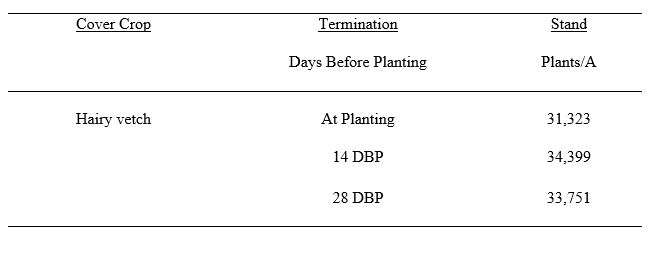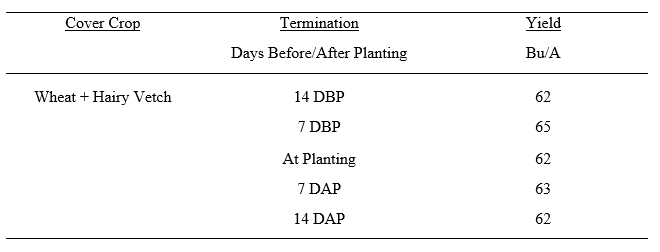
PPO-resistant Palmer amaranth has required growers to adapt to an integrated weed control approach with the assistance of the new technologies available. The adoption of cover crops in the state has shown to be a major tool for successfully controlling Palmer amaranth. Furthermore, Palmer amaranth infested fields in Tennessee are cleaner this year compared to the last decade. When considering a cover crop, it is important to pick one or a mixture that best suits the following cash crop. Cover crops should be considered the same way you would consider a PRE herbicide in your cash crop. They suppress weeds but can also be additive to the control of the PRE herbicide you actually put out in your cash crop. Both legume and grass cover crop species are dominant choices when considering a cover crop. However, some cash crops seem to thrive better in certain covers. In short, cover crops are cash crop specific.
Legume cover crops (i.e. hairy vetch or crimson clover) are good options for cash crops that need help getting out of the ground. Both corn and cotton need help getting started in the spring after planting. Since legumes have the ability to fix N, both crops benefit from an establishment standpoint. Each of these covers have the potential to produce large amounts of biomass, which will translate into weed suppression. Research at WTREC has shown that termination of the cover prior to planting is easier for hairy vetch, only requiring glyphosate + planter for sufficient control. In contrast, crimson clover control typically requires, depending on cash crop, a combination of glufosinate or glyphosate + dicamba or paraquat + metribuzin, or sequential herbicide applications to attain adequate control. Termination timing is dependent on what crop you are planting. In corn, for example, if hairy vetch isn’t terminated until at planting the population may be cut by 10% (Montgomery et al. 2016).
Table 1. The effect of termination date of hairy vetch on corn population.
Grass cover crops (i.e. wheat and cereal rye) will deteriorate slower and provide similar biomass to that of the legume species. Cereal rye and wheat are comparable in biomass unless termination or planting occurs past the middle of May. Cereal rye will continue to grow where wheat will begin to dry down. Similar to the legume cover crops, termination prior to planting is recommended to avoid stand loss with cotton or corn. Soybeans, however, can be planted into and tolerate high biomass grass or legume cover crops with no negative impact on growth. Delayed termination timing of cover crops has also shown not to affect soybean yield.
Table 2. The effect of cover crop termination date on soybean yield.
As shown in the table above, cover crop mixtures are another valuable option that can also increase early season weed suppression. Mixing a legume cover crop with a grass cover crop is highly recommended. Mixing hairy vetch with either wheat or cereal rye will often produce significantly greater biomass than one cover crop species alone. Cover crop termination timings with mixtures would have to be adjusted to suit the following cash crop, as mentioned above, and will work great in corn, cotton and soybeans.
Table 3. Seeding rates for cover crops mentioned.
- One final comment to address is the concern about whether these cover crops species could potentially turn into a weed in the following cash crop. Specifically, this is possible where cover crops have produced and dropped seed to germinate during the growing season. Fortunately, glyphosate and dicamba or 2,4-D will take out all of the aforementioned cover crops if in an Xtend or Enlist cropping system.


These are the mixes I use and have seen great success with controlling weeds and providing nitrogen for the crop. These are drilled rates.
Preceding cotton:
30 lbs cereal rye
2 lbs annual ryegrass
2 lbs vetch
8 lbs crimson clover
8 lbs Austrian winter pea
4 lbs radish (if planted before October 1)
Preceding corn:
10 lbs cereal rye
10 lbs oats
2 lbs annual ryegrass
7 lbs vetch
8 lbs crimson clover
10 lbs Austrian winter pea
4 lbs radish (if planted before October 1)